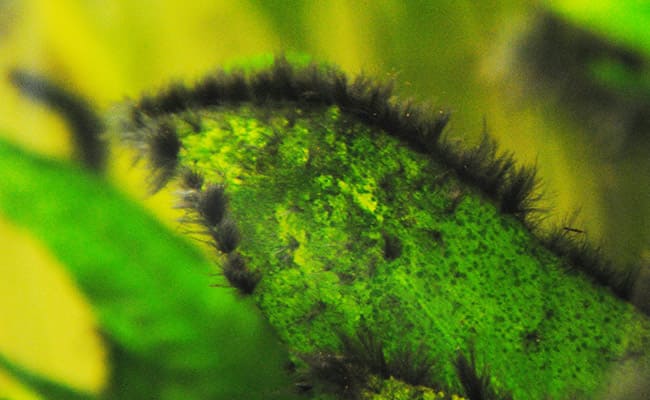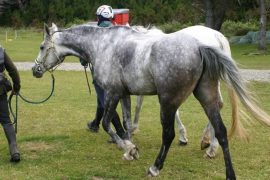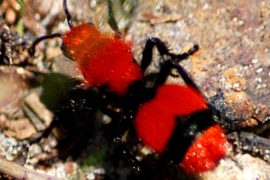Beard algae belong to the red algae. They sit on aquarium plants and objects and, especially when they are young, bear some resemblance to brush algae. Beard algae are very stubborn, which is why it is not always so easy to drive them out of the aquarium for good. We’ll show you how to do it here.
Beard Algae – Appearance and Behavior in the Tank
Beard algae only show that they belong to the red algae group when they are placed in alcohol: this is when the typical red color comes to light. In the aquarium, they show up in all imaginable shades of gray up to black. They resemble brush algae in appearance but have much longer growths that float in the current like hair. Beard algae can reach a length of several centimeters in the tank. The longer such a “hair” becomes, the more likely it is to ring and curl – just like a long whisker. Beard algae love currents and therefore often settle on the filter or on plants or decorative objects near it.
Common causes of beard algae in the aquarium
Unfortunately, once beard algae have spread in the aquarium, it is often difficult and time-consuming to get rid of them. So the rule is: prevention is the better thing to worry about – as always when it comes to algae.
Keep these factors in mind to prevent algae from forming in your aquarium. The aquarium inhabitants and aquatic plants will also thank you for that.
- Adjusting the stocking to the size of the tankless is more.
- Don’t overfeed and have a “fast day” once a week.
- This corresponds to the natural diet of fish.
- Carry out sufficient, preferably generous, water changes regularly.
- Plant your aquarium as lavishly as possible – preferably with fast-growing plants.
- Illuminate your tank so that it meets the needs of animals and plants.
- Fertilize your aquarium plants with CO2.
- If possible, sterilize the aquarium water using a UVC lamp. This also prevents all other types of algae.
Beard algae and the solution to the problem
Beard algae grow very firmly with the substrate you have chosen so that it is almost impossible to pluck them off completely. By removing it by hand, you can bring your aquarium back into shape optically, but there are almost always remnants of the beard algae. New algae soon form from these residues, which quickly recover and blossom again. So this method alone is not enough.
We advise you to take these measures to combat beard algae:
- The first thing you should do is either throttle the current in the aquarium or change the direction of the current. Since beard algae are very affine with currents, this is certainly a first step in the right direction.
- If individual leaves of your aquarium plants are affected, you should remove them rigorously. If several leaves of a plant are affected, it is advisable to pinch off the plant just above the ground or to remove the entire plant.
- Once bearded algae have settled on ornamental items in the aquarium that can be easily removed, removal is a little easier, provided the items can withstand high temperatures unscathed. Items should be boiled, then rinsed thoroughly, and scrubbed until completely clean. It is best to repeat this process. Only when the decorative item has been completely freed from the beard algae can you put it back in the basin. If you are not sure whether you were able to remove all the beard algae, it is better to dispose of the decorative parts.
- Particularly beautiful stones or roots that you would like to keep can be covered with a layer of table salt approx. 5 mm thick, even when wet. The hygroscopic effect of the salt deprives the algae of water and they die. We also destroy algae residues in the adhesive edges of older aquariums before they are replanted after general cleaning.
The removal of the beard algae becomes difficult when, for example, stone structures firmly bonded to the glass or the bottom of the tank are infested with beard algae. In this case, consider whether a complete redesign of the aquarium would be a sensible solution. In this pool, you can create conditions right from the start that prevent beard algae from forming in the first place.
Algae-eating animals to control beard algae
Some types of snails, shrimp, the Siamese Algae Eater, or the Netweed Algae Eater are also suitable for preventing and combating algae.
However, only acquire these animals if you are also interested in caring for the animal itself and you have the right conditions in your aquarium. The Siamese Algae Eater is up to 15 centimeters long, the Netweed Algae Eater can reach a length of up to 17 centimeters. If you have the opportunity to care for these animals, they can be of great help in the fight against beard algae.
We hope that we have been able to help you with our information and tips on beard algae and how to combat them. What are your experiences with beard algae? We are looking forward to your comments!





